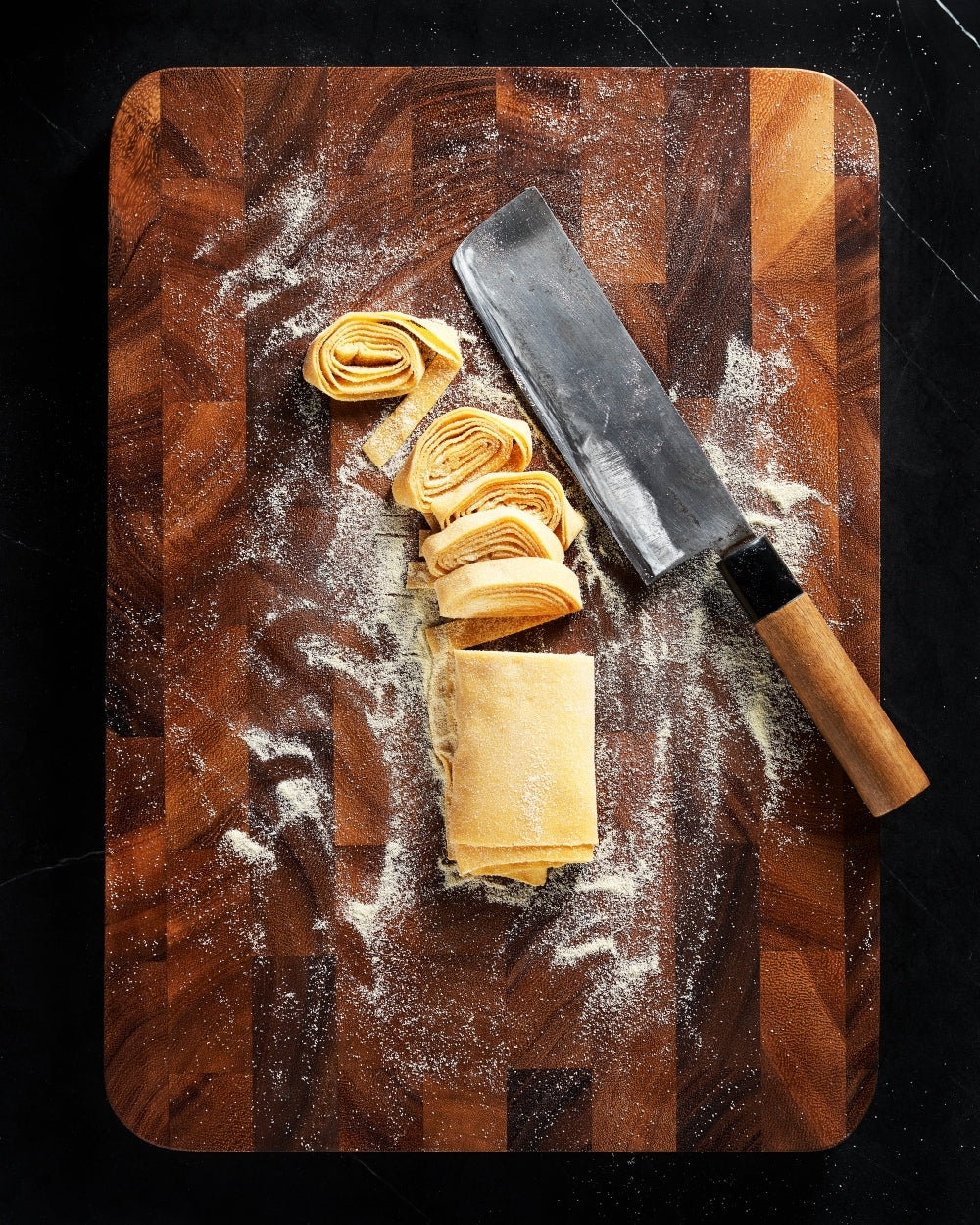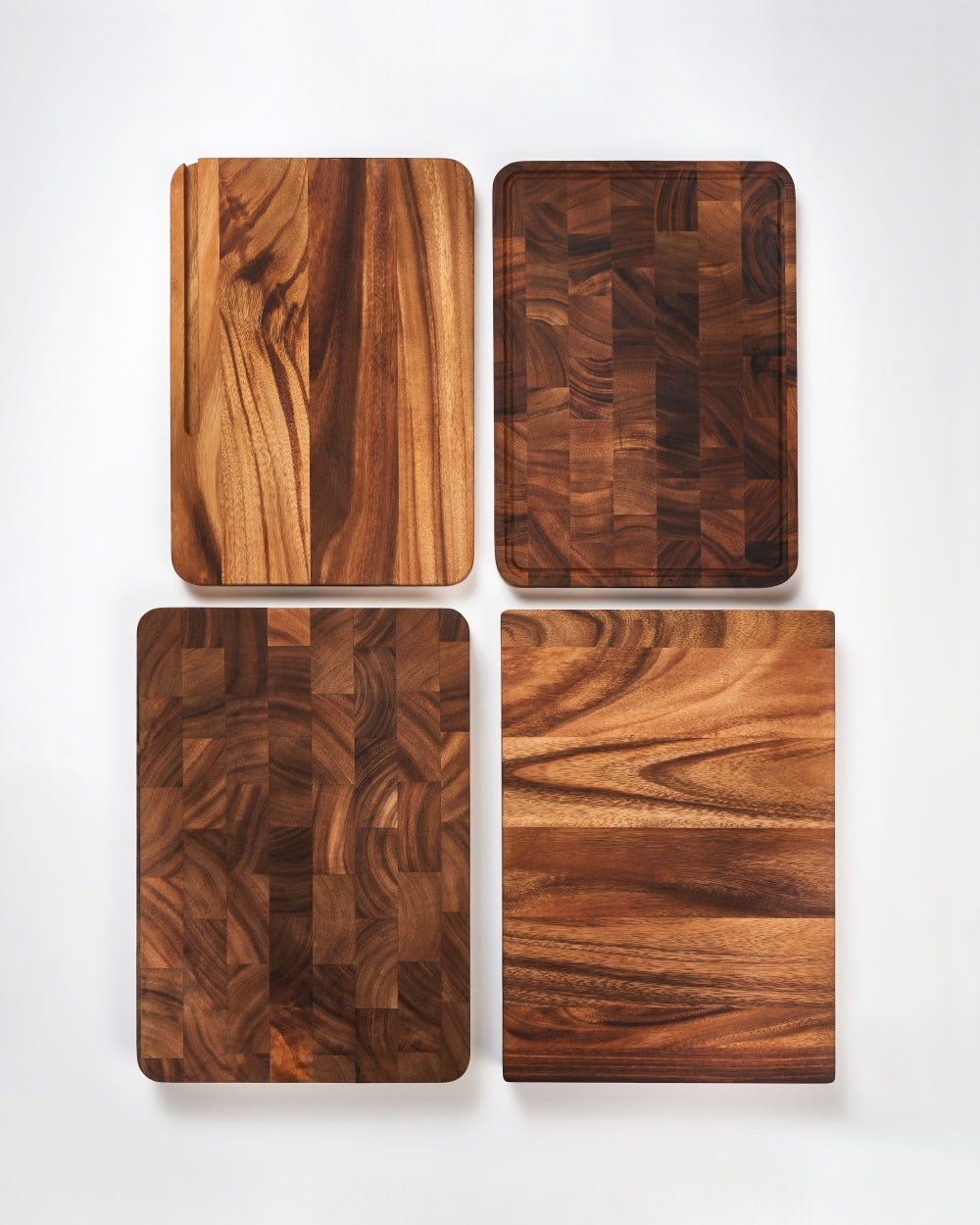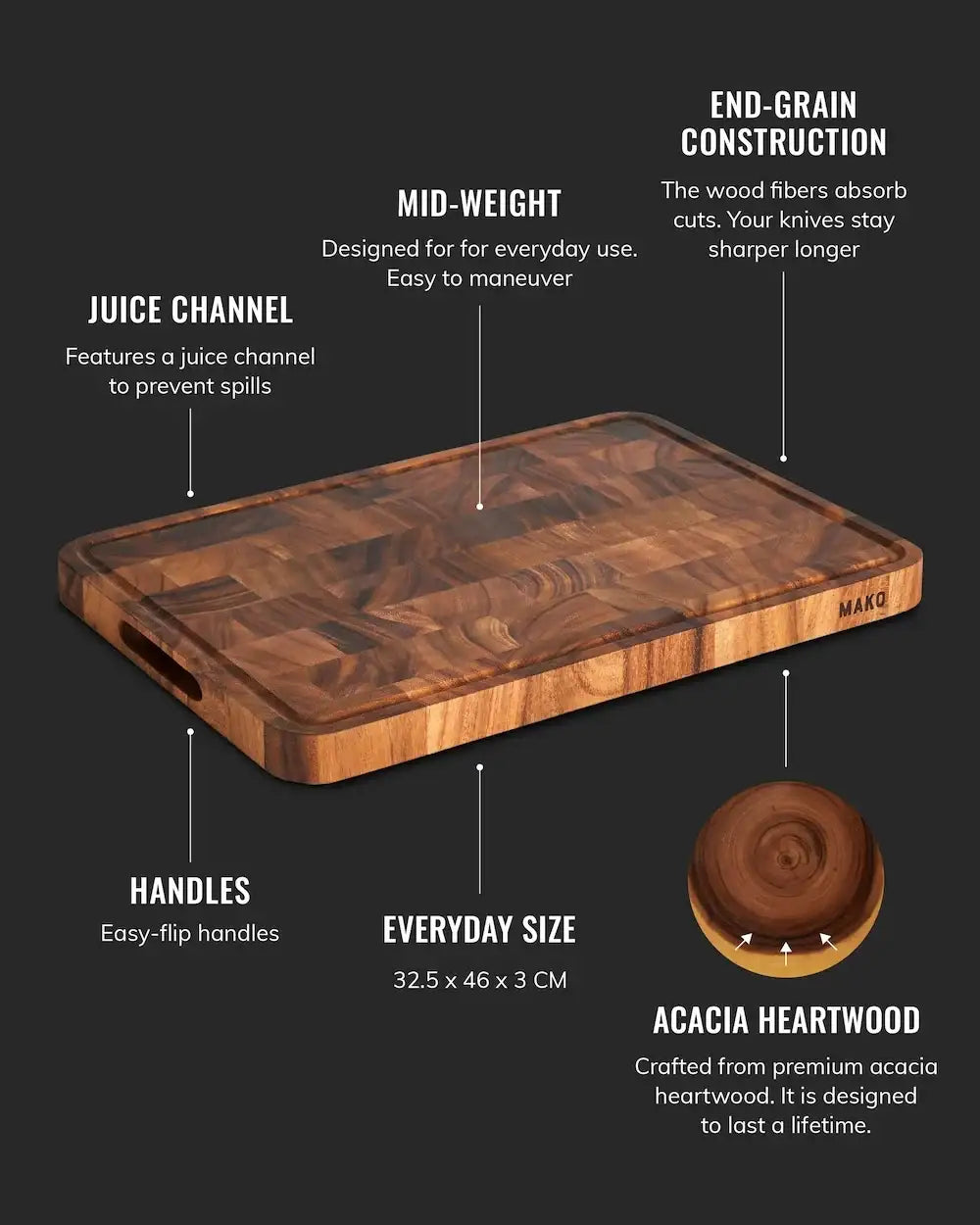GET IT IN TIME FOR CHRISTMAS
PLACE YOUR ORDER BY:
*8th December for New Zealand - FINISHED*
15th December for QLD, WA, NT, TAS & ACT
18th December for VIC, NSW & SA

What makes wooden chopping boards so good
Wood vs. plastic boards: what’s the go?
If you’re thinking “Hmmm… wood. Isn’t it meant to be unhygienic for a chopping board?” Nope. Not so. Evidence by clever science folk shows that wooden boards in fact have the ability to halt bacteria growth. Wood contains antimicrobial properties that discourage germ growth, even when a board is no longer new. Put simply, this works by the wood drawing moisture – which the bacteria needs to survive and thrive – towards the centre of a board. Amazing, huh?
Plastic boards, on the other hand, have their advantages but without proper love and care they can get knife-scarred with use, creating a roughed-up surface that’s more challenging to clean and dry. For heavy duty use we recommend wood instead. And yes, the surface of wooden cutting boards can also take a pounding over time but did you know that wood is ‘self-healing’? Minor surface damage automatically repairs itself, with scratches either partially or totally disappearing. Again, amazing.
How about glass vs wood boards?
Wooden boards don’t blunt your knives like other chopping boards, notably glass ones. And although glass has the advantage of being completely non-porous, smooth, easy to keep clean and resistant to high temperatures (although we don’t recommend you putting hot pots and pans on your wooden board), the knife-blunting action alone makes glass boards a hard no for us. Also, side note: blunt knives are actually a danger because you need to use more pressure to use them and this makes a cut more likely. Yikes.
How are MAKO wooden boards different?
MAKO chopping boards, available in edge grain and end grain designs, are made from premium acacia heartwood. Look after one of these beauties and it’s likely to last as long as you do. A pleasure to use and bringer of pure prep joy, they’re super solid, made from all food-grade materials, and will be in your kitchen for the long haul. Plus they happen to look great on a bench (we’re big on aesthetics as well as practicalities).
Want a real heavy-weight performance piece? Choose the MAKO Master 20 Butchers Block. This is the board you leave out on the bench. A beautiful lifetime investment.
Want a mid-weight option? We love the clever MAKO Master 18 All-Purpose Chopping Board and the MAKO Prestige 18 Multi-Use Chopping Board. Gorgeous to look at, made for performance, and with design features that make them super practical.

So how do you take care of a wooden cutting board?
A wooden board is low-maintenance. Here’s what you need to know.
WASHING // Every time you use it, scrape off any stuck-on bits, then wash it well in warm, soapy water. Soap made using vegetable oils is preferable; find one at a health food store. Don’t ever soak your board and don’t shove it in the dishwasher either. Both these moves can cause your board to absorb excess water and, ultimately, will trash it. If you suspect your board is getting a bit dampish, sprinkle it with coarse salt and stand it overnight; the salt will draw out excess moisture. Just wipe the salt off the next day and you’re good to go.
DRYING // Always air dry your board after washing, leaving it somewhere placed on a slight angle. If you need to get rid of any odours that build up (looking at you, garlic!), just rub your board with a cut lemon; the acidic juices neutralise smells.
OILING // Oiling your board will keep it looking fabulous, but avoid olive oils as these can turn rancid. Instead, use vegetable or food-grade mineral oil (also called liquid paraffin), which has no colour, smell or taste and won’t turn ick. Find this at hardware or good kitchen stores – you can also use beeswax. Oiling about twice a year is usually enough, unless your board is looking a bit dry, or is quickly absorbing liquid (another sign it’s drying out). Just rub the oil lightly all over, then leave your board overnight to dry. Easy!









